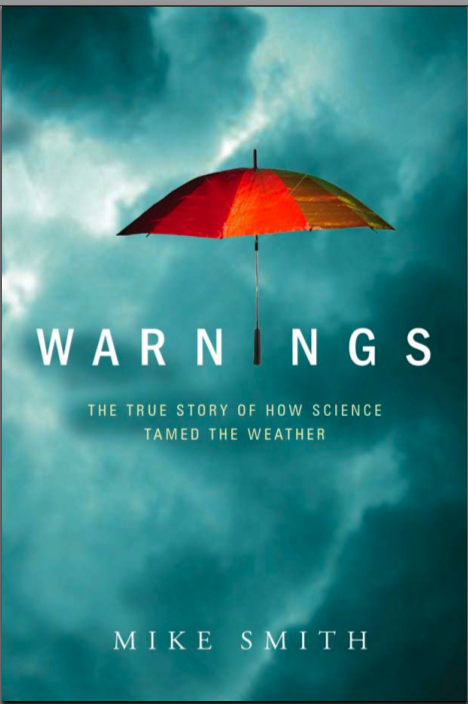With that Christmas Gift Card
This informative and very entertaining narrative investigates some of the country's most devastating storms over the past fifty years. In looking to the past, the author shows the effort that went into eventually creating the national severe weather warning system.
--- Bookloons





Apropos of "Warnings", here is a link to an interesting article on advances in tsunami warning systems:
ReplyDeletehttp://www.terradaily.com/reports/Governments_can_prevent_another_Tsunami_devastation_by_investing_in_disaster_warning_systems_999.html
While I'm typing ... an idea has been bouncing around my mind recently ... and I recognize you, Mike, and Accuweather and perhaps the railroads have already thought of all this ... but anyway, my idea:
The railroad industry is spending billions of dollars on a new command and control system known as Positive Train Control. Major portions of this investment include enhanced communication links for data transmission between track-side signals and sensors and control centers (as many as 22,000 radio towers!), and the replacement of thousands of signal masts and signals.
Why not "piggyback" (a little oldtime railroad lingo, there) compact weather stations on each of those 22,000 track-side installations? The benefits for railroad safety and efficiency seem obvious to me, but would need to be formally quantified, of course.
This year has seen several instances of highwinds toppling "double-stack" container trains, not to mention the usual perils of tornadoes, floods, ice storms, etc. The potential to vastly improve the granularity of observations and (presumably) forecasts, again, to this layman, seem self-evident, and would significantly improve railroad risk management capabilities.
And a significant social benefit of improved observations and forcasts (and "Warnings") would accrue to the general public, especially in the vast rural areas traversed by the railroad network.
It is my lay impression that remote/compact weather observation station costs have dropped dramatically in the digital era. Why not leverage that benefit with the ongoing PTC investment window?
Just an idea. Can we ever have too much "Warning(s)"?
Hi Richard, thanks for your comment.
ReplyDeleteAll of the Class One railroads have trackside weather instruments. With most of them, it is just a handful of locations. Union Pacific has hundreds.
The biggest challenge is microbursts in radar-sparse areas which trackside instruments can only partially solve.
Mike
Interesting that UP has so many. Have you seen reports on their experience? Your microburst observation seems quite relevant, yet I wonder if "longitudinal density" of railroad signal-based sensors might not serve low-speed trains (typically 40 -70 mph) in a manner comparable to high-speed aircraft being protected by radar?
ReplyDeleteAnd powerful straight-line winds are common enough. One variety of such winds are the chinooks, coming off the Rockies as weather systems move eastward. It is my understanding that BNSF has installed some sort of chinook sensing system near Browning, Montana, having experienced several "blow-overs" of doublestacks in that vicinity.
Clearly, professional meteorological analysis accompanied by appropriate financial discipline would be required to justify deployment on the scale I described. But it does seem that as PTC is deployed, an opportunity exists for examining an integrated, and thus less costly, weather-monitoring system.
Hi Richard, I'm going to write a blog posting on this subject as I think people would be interested. Mike
ReplyDelete